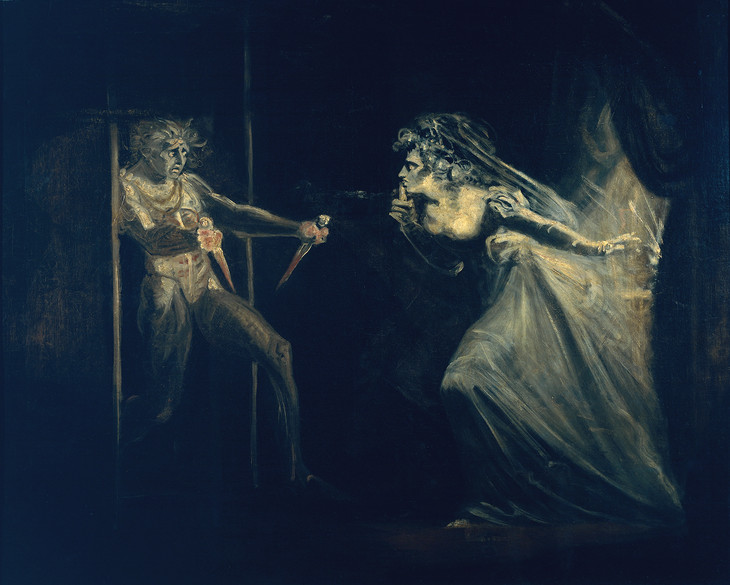Henry Fuseli Lady Macbeth Seizing the Daggers ?exhibited 1812

Henry Fuseli 1741–1825
Lady Macbeth Seizing the Daggers ?exhibited 1812
Oil paint on canvas
support: 1016 x 1270 mm; frame: 1213 x 1454 x 100 mm
Tate T00733
Purchased with assistance from the Friends of the Tate Gallery 1965
Henry Fuseli 1741–1825
Lady Macbeth Seizing the Daggers ?exhibited 1812
Oil paint on canvas
support: 1016 x 1270 mm; frame: 1213 x 1454 x 100 mm
Tate T00733
Purchased with assistance from the Friends of the Tate Gallery 1965
This dramatic work was probably inspired by an actual performance of Shakespeare’s tragedy Macbeth. Encouraged by the deceptive prophecy of witches, Macbeth and his wife plot to take the crown of Scotland by murdering King Duncan in his sleep. Here Macbeth emerges horrified from the murder scene off-stage, still holding the bloodied weapons. Lady Macbeth takes control of her husband and the situation but by the end of the play, consumed by guilt, she succumbs to madness and suicide. This is one of the most psychologically charged scenes in the play, and Fuseli has treated it with a nightmarish almost supernatural intensity.
How to cite
Henry Fuseli, Lady Macbeth Seizing the Daggers ?exhibited 1812, in Nigel Llewellyn and Christine Riding (eds.), The Art of the Sublime, Tate Research Publication, January 2013, https://www
